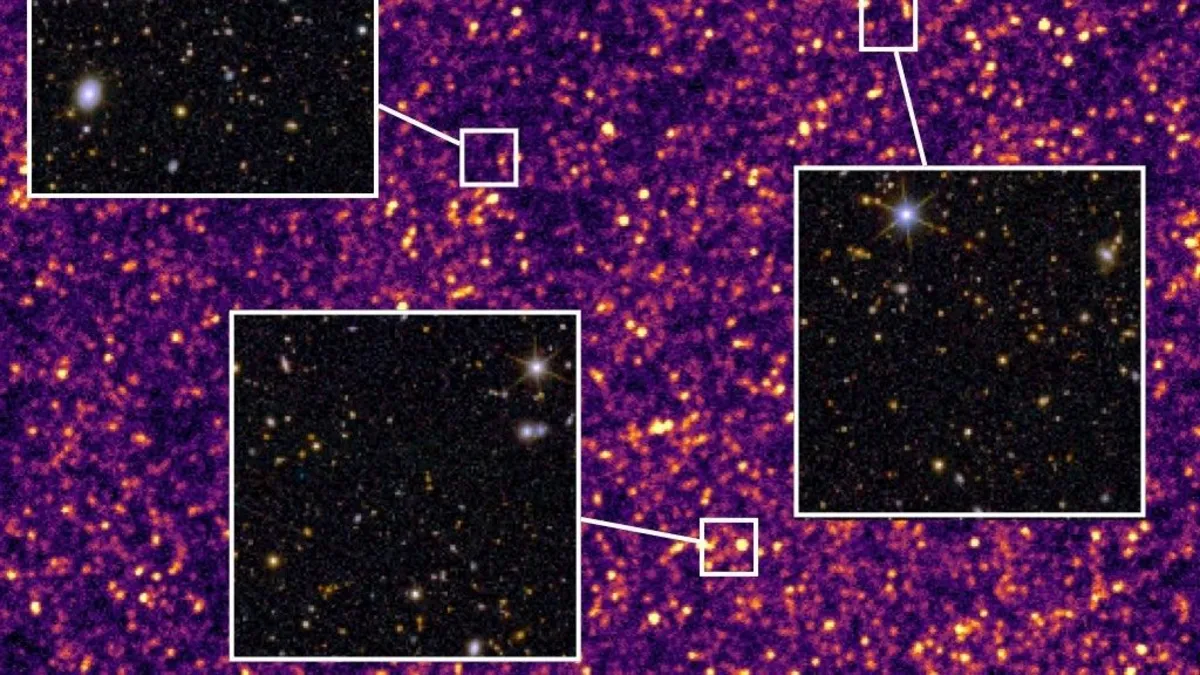
A groundbreaking study utilizing a telescope designed to create the largest-ever map of the universe has confirmed a significant, albeit expected, reality: nothing lasts forever, including the cosmos itself. This study, conducted by a dedicated team of 175 researchers using extensive observations from the European Space Agency's (ESA) Euclid and Herschel space telescopes, marks a pivotal moment in our understanding of the universe's evolution.
By analyzing the heat emitted from stardust across more than 2 million galaxies, the research team discovered that galaxies have experienced a slight cooling trend and a reduction in star formation rates over the last 10 billion years. These findings suggest that the universe may have passed its peak phase of growth. Despite the estimated expiration date for the cosmos being an unfathomably distant timeframe—ranging from 33 billion to 1 quinvigintillion years (1 followed by 78 zeros)—the study indicates that in terms of star formation, the universe's vitality is on a downward trajectory.
According to Douglas Scott, a co-author of the study and a cosmologist at the University of British Columbia (UBC), “The amount of dust in galaxies and their dust temperatures have been decreasing for billions of years, indicating we are beyond the epoch of maximum star formation.” This research has been submitted to the journal Astronomy and Astrophysics and is currently available as a non-peer-reviewed preprint.
The ESA's Euclid telescope made significant strides in March by releasing its first major data set, which included observations of 26 million galaxies stretching over 10.5 billion light-years. This initial data release is just the beginning of Euclid's mission to create the largest 3D map of the universe, with an ambitious goal of charting around 1.5 billion galaxies that will cover one-third of the night sky.
For their recent study, the researchers focused on 2.6 million galaxies cataloged in Euclid's first data release, integrating these observations with archival data from the Herschel Space Observatory (operational from 2009 to 2013). This combined approach allowed the team to analyze the heat emitted by stardust across a broad spectrum of wavelengths, yielding the most comprehensive measurements of galactic temperatures to date. Lead author Ryley Hill, a postdoctoral research fellow at UBC, noted, “By combining the data and having such a huge sample of galaxies, we can produce the most statistically robust calculations to date.”
Interestingly, the study revealed that the average temperature of galaxies has cooled only slightly over the past 10 billion years, with a decrease of about 10 kelvins. While stars such as our sun shine at temperatures exceeding a million kelvins, galaxies predominantly consist of empty space, resulting in much lower average temperatures. The earliest galaxies observed in this survey presented an average temperature of approximately 35 K (minus 396 F, or minus 238 C). This seemingly minor change is significant, as the temperature of stardust directly influences star formation rates. The research further establishes that hotter galaxies typically host higher rates of star formation due to a greater presence of hot, massive stars, while cooler galaxies exhibit lower rates of star formation.
Dust, often considered a nuisance on Earth, plays a vital role in the life cycle of stars. Stars originate from clouds of gas and dust that become sufficiently dense, collapsing under their own gravity, which leads to heating and spinning. If a collapsed clump reaches adequate temperature and density, nuclear fusion ignites in its core, forming a star. Over billions of years, when the star exhausts its nuclear fuel, it ultimately explodes as a supernova, dispersing additional dust and materials that contribute to the formation of new stars.
Galaxies can deplete their star-forming materials through several mechanisms, including being cut off from their gas supplies during mergers or having their star-forming matter violently expelled into space by outbursts from supermassive black holes. Once a galaxy runs out of sufficient star-forming material, it becomes “quenched”—starved of fuel and destined to extinguish over time.
These findings highlight the delicate balance of cosmic evolution and the inevitable cooling of the universe, prompting further inquiry into the future of galaxies and their formation processes.